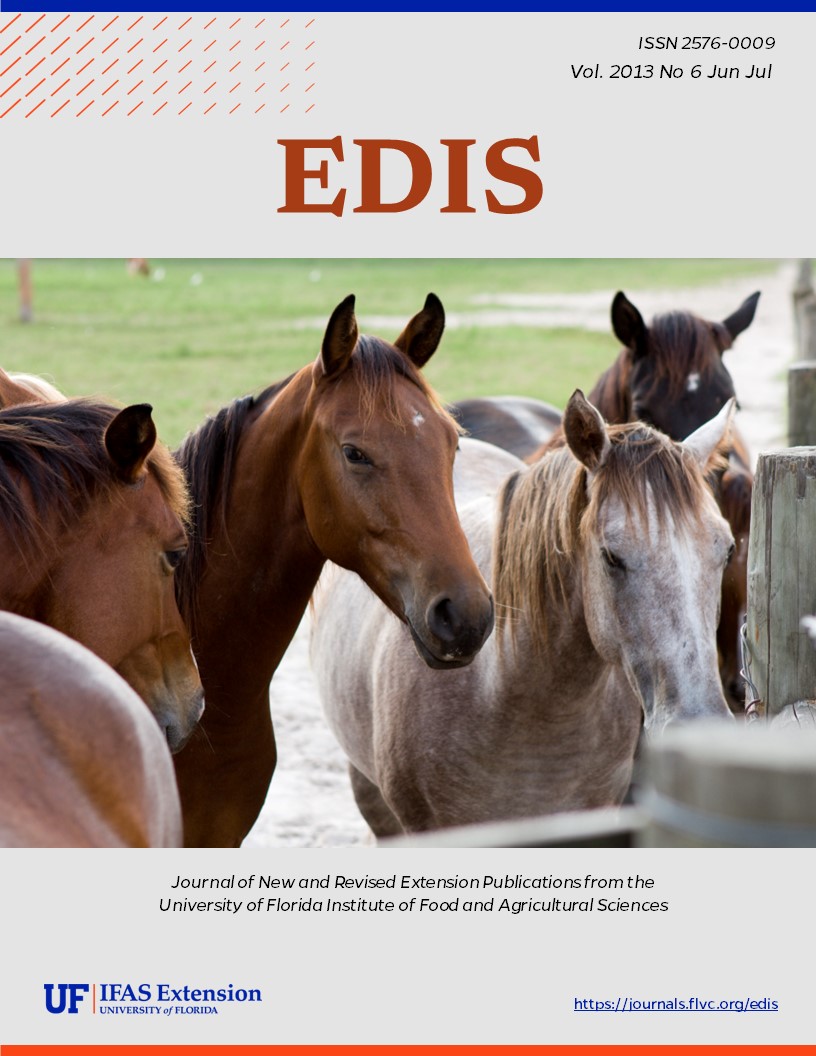Resumen
This document discusses the importance of systematic planning for nature-based recreation in Florida. It highlights the need for land managers to balance public enjoyment with conservation efforts. The article outlines various planning frameworks, such as the Limits of Acceptable Change and the Recreation Opportunity Spectrum, to manage ecological and social impacts. It emphasizes setting clear objectives, zoning for recreation opportunities, and inventorying conditions to ensure sustainable and enriching experiences for visitors while protecting natural resources. Original publication date March 2010.
Citas
Anderson, D. H., D. W. Lime, and T. L. Wang. 1998.
Maintaining the Quality of Park Resources and Visitor Experiences: A Handbook For Managers. TC-777 1998. St. Paul, MN: University of Minnesota, Department of Forest Resources, Cooperative Park Studies Unit and Minnesota Extension Service, Tourism Center. 134 pp. Accessible on-line: http://cpsp.cfans.umn.edu/publications/revtactics_handbook.pdf. Ceballos-Lascuráin, H. (1996). Tourism, ecotourism, and protected areas: The state of nature-based tourism around the world and guidelines for its development. IUCN, Gland, Switzerland, and Cambridge, UK.
Ceballos-Lascuráin, H. 1996. Tourism, ecotourism, and protected areas: The state of nature-based tourism around the world and guidelines for its development. IUCN, Gland, Switzerland, and Cambridge, UK.
Clark, J.K. and T.V. Stein. (2003). Marjorie Harris Carr Cross Florida Greenway Recreation Plan. Gainesville: University of Florida Institute of Food and Agricultural Sciences.
Clark, R.N. and G.H. Stankey. (1979). The Recreation Opportunity Spectrum: A framework for, management, planning, and research. USDA Forest Service. Pacific Northwest Forest and Range Experiment Station. PNW-GTR-93. Corvalis, OR. https://srs.fs.usda.gov/pubs/6014 (February 2023).
Cole, D.N. (1989). Wilderness Campsite Monitoring Methods: A Sourcebook. USDA Forest Service. Intermountain Research Station. INT-GTR-259. Ogden, UT. https://winapps.umt.edu/winapps/media2/leopold/pubs/179.pdf (February 2023).
Eagles, P.F.J. and P. Nilsen. (1997). Ecotourism: An Annotated Bibliography for Planners and Managers. The Ecotourism Society: North Bennington, VT. https://ecotourism.org/ (February 2022).
Hammitt, W.E., D.N. Cole, and C.A Monz. (2015). Wildland Recreation: Ecology and Management. John Wiley and Sons: New York.
Hendee, J.C. and C.P Dawson. (2008) Wilderness Management: Stewardship and Protection of Resources and Values. Fulcrum Publishing: Golden, CO.
Lime, D.W., D.H. Anderson, and J.L. Thompson. (2004). Identifying and Monitoring Indicators of Visitor Experience and Resource Quality: A Handbook for Recreation Resource Managers. St. Paul, MN: University of Minnesota, Department of Forest Resources. 62 pp.
Lindberg, K. and D.E. Hawkins, (Eds.). (1993). Ecotourism: A Guide for Planners and Managers. The Ecotourism Society: North Bennington, VT. https://ecotourism.org/ (February 2022).
Mazzotti, F. J. and C. Morgenstern. (1996). A Scientific Framework for Managing Urban Natural Areas. SSWEC74, Gainesville: University of Florida Institute of Food and Agricultural Sciences. https://doi.org/10.32473/edis-uw112-1996 (February 2023).
Minnesota Division of Parks and Recreation. 1998. Itasca State Park Management Plan. Minnesota Department of Natural Resources. St. Paul, MN
Stankey, G.H., D.N. Cole, R.C. Lucas, M.E. Petersen, and S.S. Frissell. (1985). The Limits of Acceptable Change (LAC) System for wilderness planning at https://doi.org/10.5962/bhl.title.109310 (February 2023).
USDA Forest Service. (1995). Landscape Aesthetics: A Handbook for Scenery Management. USDA Forest Service. Agricultural Handbook Number 701. Washington, DC.
USDI National Park Service. 1997. VERP: The Visitor Experience and Resource Protection (VERP) Framework. A Handbook for Planners and Managers. Denver Service Center: Denver, CO. http://planning.nps.gov/document/verphandbook.pdf [February 2012]

Esta obra está bajo una licencia internacional Creative Commons Atribución-NoComercial-SinDerivadas 4.0.
Derechos de autor 2013 UF/IFAS

